
EDCTP portfolio: Emerging diseases
index


The COVAB project is aiming to identify antibodies from COVID-19 patients with the potential to be used therapeutically.
Assessing antibody therapeutics for COVID-19

There is great interest in the use of antibodies from recovered patients to treat SARS-CoV-2 infections. However, this requires a good understanding of the antibodies produced after infection and which are mostly strongly associated with protection.
A further important factor to consider is the impact of past infection with other coronaviruses. This past exposure may trigger more protective responses, but could also elicit exaggerated and damaging immune reactions.
The challenge

The COVAB project is building on the foundation of two EDCTP-funded projects, CHAPS and PrEPVaCC, in order to develop a deeper understanding of the dynamics of antibody production after infection with SARS-CoV-2 and to identify candidate antibodies to be used as therapeutics.
The project is using high-throughput technology to rapidly clone and characterise antibodies from COVID-19 patients in Uganda and UK. It will explore how these change over the course of infection, how they relate to past coronavirus exposure, and their association with severity of symptoms. The project will also clone antibodies with the most potent virus-neutralising abilities for testing as possible therapeutics.
Complementing this work, the project is also setting up an innovative ‘ex vivo challenge model’ for testing potential therapeutics. This model will be based on cultured mucosal tissue samples, which were collected from 50 healthy adults in South Africa. The tissue samples will be deliberately exposed to SARS-CoV-2. As well as being used to test the potential of candidate therapeutics to prevent infection, the challenge model will be used to determine whether tissue from recovered COVID-19 patients can be re-infected, whether SARS-CoV-2 infectivity is affected by factors such as HIV status, age and inflammation, and how infection and preventive treatments affect mucosal immune responses.
A final strand of the project is taking advantage of existing community relationships to gather information that could shape the design and implementation of a future COVID-19 vaccine trial.
The project

The COVAB project has the potential to make several important contributions to the battle against COVID-19. Longitudinal profiling will provide insight into the evolution of antibody responses, which will aid interpretation of antibody testing results. Determining whether re-infection is possible is of great importance, and could have a major influence on public health responses, vaccine-testing strategies and modelling of herd immunity. A better understanding of the impact of HIV, age and pre-existing inflammation, as well as past exposure to other coronaviruses, on susceptibility to infection and disease severity would also be of great value.
In terms of therapeutics, the ex vivo model – the first based on mucosal tissue samples – will provide a rapid way to screen potential treatments in advance of trials. Finally, antibody characterisation could identify possible those with therapeutic potential and suggest which antibody-based treatments are most likely to be effective.
Impact


“
test the safety and efficacy of this new formulation in young children
”
Bringing antiretroviral drugs to children

The CHAPAS trials have ensured that many more children with HIV have benefited
from life-saving antiretrovirals.
EDCTP portfolio: HIV & HIV-associated infections
The challenge
There is great interest in the use of antibodies from recovered patients to treat SARS-CoV-2 infections. However, this requires a good understanding of the antibodies produced after infection and which are mostly strongly associated with protection.
A further important factor to consider is the impact of past infection with other coronaviruses. This past exposure may trigger more protective responses, but could also elicit exaggerated and damaging immune reactions.

The COVAB project is building on the foundation of two EDCTP-funded projects, CHAPS and PrEPVaCC, in order to develop a deeper understanding of the dynamics of antibody production after infection with SARS-CoV-2 and to identify candidate antibodies to be used as therapeutics.
The project is using high-throughput technology to rapidly clone and characterise antibodies from COVID-19 patients in Uganda and UK. It will explore how these change over the course of infection, how they relate to past coronavirus exposure, and their association with severity of symptoms. The project will also clone antibodies with the most potent virus-neutralising abilities for testing as possible therapeutics.
Complementing this work, the project is also setting up an innovative ‘ex vivo challenge model’ for testing potential therapeutics. This model will be based on cultured mucosal tissue samples, which were collected from 50 healthy adults in South Africa. The tissue samples will be deliberately exposed to SARS-CoV-2. As well as being used to test the potential of candidate therapeutics to prevent infection, the challenge model will be used to determine whether tissue from recovered COVID-19 patients can be re-infected, whether SARS-CoV-2 infectivity is affected by factors such as HIV status, age and inflammation, and how infection and preventive treatments affect mucosal immune responses.
A final strand of the project is taking advantage of existing community relationships to gather information that could shape the design and implementation of a future COVID-19 vaccine trial.
The project
The later CHAPAS-3 trial compared the efficacy and safety of three fixed-dose combinations including two without stavudine (found to have some long-term side effects in adults, leading to a recommendation that its use be discontinued in children). The trial the first of its kind in Africa studied nearly 500 children at four sites in two African countries.
The COVAB project has the potential to make several important contributions to the battle against COVID-19. Longitudinal profiling will provide insight into the evolution of antibody responses, which will aid interpretation of antibody testing results. Determining whether re-infection is possible is of great importance, and could have a major influence on public health responses, vaccine-testing strategies and modelling of herd immunity. A better understanding of the impact of HIV, age and pre-existing inflammation, as well as past exposure to other coronaviruses, on susceptibility to infection and disease severity would also be of great value.
In terms of therapeutics, the ex vivo model – the first based on mucosal tissue samples – will provide a rapid way to screen potential treatments in advance of trials. Finally, antibody characterisation could identify possible those with therapeutic potential and suggest which antibody-based treatments are most likely to be effective.
ratios forfixed-dose combinations and on appropriatedosage according to weight.
The CHAPAS-3 trial confirmed the effectiveness of fixed-dose combinations, providing further impetus to the rollout of antiretrovirals to children. Its evidence on abacavir informed the WHO recommendation of abacavir-containing combinations for first-line therapy in children. Trial data have also been used to support applications for regulatory approval for new scored efavirenz tablets.
Impact
L’homme RF et al. Nevirapine, stavudine and lamivudine pharmacokinetics in African children on paediatric fixed-dose combination tablets. AIDS. 2008;22(5):557–65.
Mulenga V et al. Abacavir, zidovudine, or stavudine as paediatric tablets for African HIVinfected children (CHAPAS-3): an open-label, parallel-group, randomised controlled trial. Lancet Infect Dis. 2016;16(2):169–79.
WHO. Guidelines on the use of antiretroviral drugs for treating and preventing HIV infection: recommendations for a public health approach. 2010.
WHO. Consolidated guidelines on the use of antiretroviral drugs
for treating and preventing
HIV infection: Recommendations for a public health approach
(second edition). 2016
Projects: Children with HIV in Africa Pharmacokinetics and Adherence of Simple Antiretroviral Regimens (CHAPAS): CHAPAS-1 and -3
Project lead: Professor Chifumbe Chintu, University Teaching Hospital, Zambia (CHAPAS-1); Dr Veronica Mulenga, University Teaching Hospital, Zambia (CHAPAS-3)
Target population(s): Children with HIV
Sample size: 71 (CHAPAS-1); 480 (CHAPAS-3)
Countries involved: Ireland, the Netherlands, the UK, the USA, Zambia (CHAPAS-1); Uganda, Zambia (CHAPAS-3)
Project duration: 2005–2009 (CHAPAS-1); 2010 –2011 (CHAPAS-3)
EDCTP funding: €1.2M (CHAPAS-1); €4.6M (CHAPAS-3)
Total project funding: €1.2M (CHAPAS-1); €5.0M